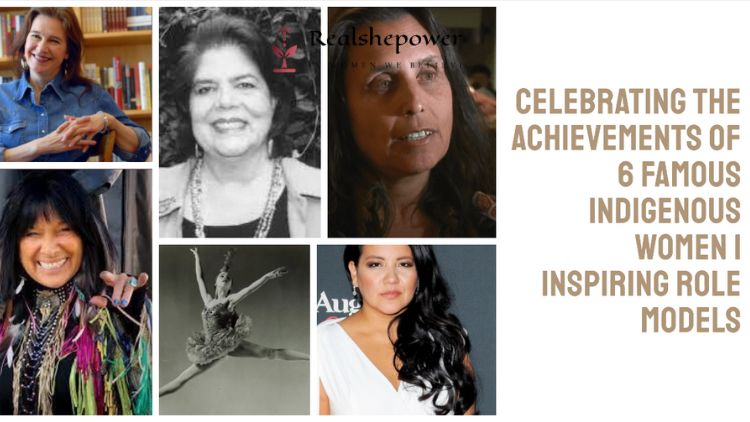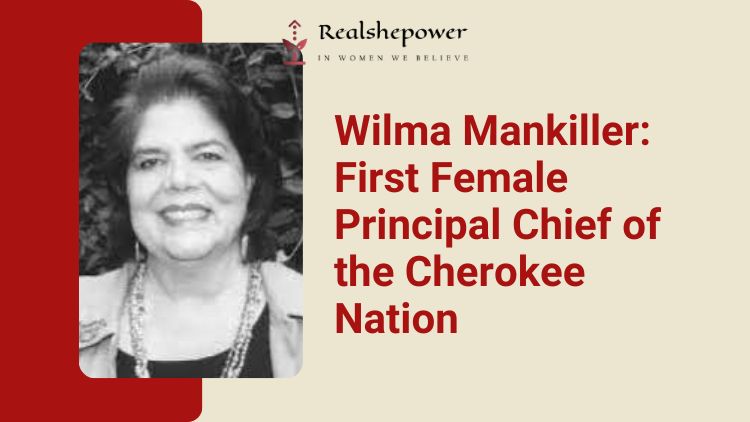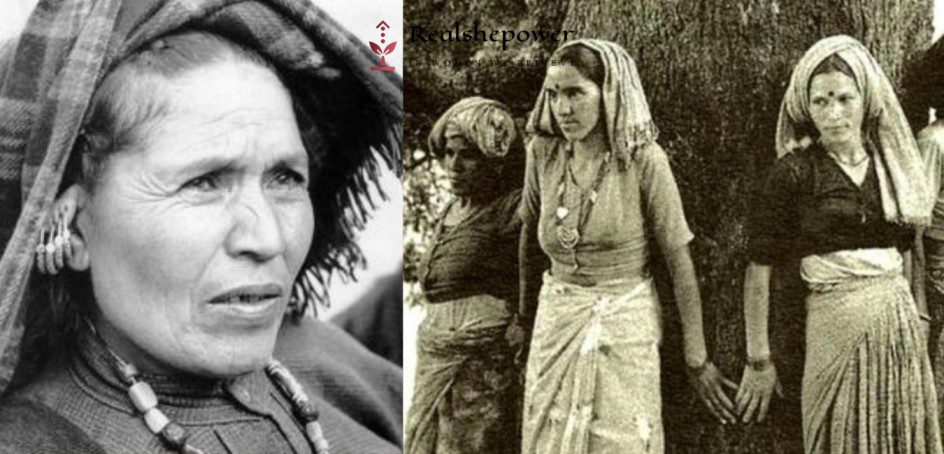Celebrating 6 Famous Indigenous Women | Inspiring Role Models


Indigenous women have played pivotal roles in shaping history, culture, and society around the world. From activism and leadership to art and literature, their contributions have been significant and far-reaching. In this article, we celebrate the achievements of famous Indigenous women, highlighting their accomplishments and the impact they have made in various fields. Join us on a journey of inspiration as we recognize these remarkable individuals.
Table of Contents
1. Winona LaDuke: Environmental Activist and Political Leader

Winona LaDuke, a name that resonates with the power of activism and the spirit of resilience. Hailing from the Anishinaabe tribe, this remarkable Indigenous woman has dedicated her life to safeguarding the Earth and fighting for the rights of Indigenous peoples. As an environmental activist and political leader, Winona LaDuke has become a beacon of hope in the quest for a sustainable and just world.
With a deep-rooted connection to her ancestral lands, LaDuke founded the White Earth Land Recovery Project, an organization committed to restoring and preserving the natural resources of the White Earth Reservation. Through this initiative, she has championed sustainable development, advocating for responsible land use and the protection of ecosystems that have been the lifeblood of Indigenous communities for centuries.
But Winona LaDuke’s activism extends far beyond the borders of her own community. With a strong voice and unwavering determination, she has fearlessly taken on the most pressing environmental issues of our time. From protesting against destructive pipelines to raising awareness about the devastating impacts of climate change, LaDuke has fought tirelessly to ensure that Indigenous perspectives are included in conversations about the future of our planet.
Yet, her activism does not stop at environmental concerns alone. As a political leader, Winona LaDuke has used her influence to amplify the voices of Indigenous peoples on a global scale. She has campaigned for Indigenous sovereignty, challenging oppressive systems that have marginalized and disregarded Indigenous rights for far too long. Through her work, she has brought attention to the vital importance of preserving Indigenous cultures, traditions, and ways of life.
Winona LaDuke’s journey has been one of courage and resilience, as she has faced numerous challenges and setbacks along the way. But through it all, she has remained steadfast in her commitment to justice, sustainability, and the empowerment of Indigenous communities. Her unwavering spirit serves as an inspiration to countless individuals, reminding us that we all have a role to play in creating a better world.
In recognizing Winona LaDuke’s contributions, we not only honor her legacy but also acknowledge the crucial role that Indigenous peoples play in protecting the Earth and advocating for a more equitable society. Her story serves as a reminder that the fight for environmental and social justice is ongoing, and that each of us has the power to make a difference, just as Winona LaDuke has done with her indomitable spirit and unwavering dedication to the causes she holds dear.
Winona LaDuke, an environmental activist and political leader, continues to inspire and pave the way for future generations to follow in her footsteps. Her vision of a world where the rights of Indigenous peoples are respected and the Earth is cherished serves as a guiding light, reminding us of the transformative power of activism and the importance of standing up for what we believe in.
2. Buffy Sainte-Marie: Singer-Songwriter and Activist

In the realm of music, there are rare individuals who possess the ability to create melodies that touch our souls, lyrics that ignite our passion, and voices that resonate with profound emotion. Buffy Sainte-Marie, a Cree singer-songwriter, stands among these extraordinary talents. But her impact goes far beyond her musical prowess, as she has also emerged as a powerful activist, using her platform to advocate for Indigenous rights and social justice.
Buffy Sainte-Marie’s musical journey is one of profound authenticity and artistic excellence. Her mesmerizing voice has the power to captivate audiences, drawing them into a world of raw emotions and heartfelt storytelling. Through her enchanting melodies and poetic lyrics, she weaves a tapestry of experiences, illuminating the struggles and triumphs of Indigenous peoples. From the haunting beauty of “Universal Soldier” to the introspective introspection of “Until It’s Time for You to Go,” each song becomes a vessel for conveying a message of resilience, cultural pride, and the universal yearning for a better world.
Beyond her musical accomplishments, Buffy Sainte-Marie has become a formidable force in the realm of activism. Her unwavering commitment to Indigenous rights and social justice has been a driving force behind her work. She fearlessly uses her voice to shed light on the issues facing Indigenous communities, advocating for equality, representation, and the recognition of Indigenous cultures and histories.
Buffy Sainte-Marie’s activism is deeply rooted in her own experiences as a Cree woman. Having faced discrimination and prejudice throughout her life, she has transformed those challenges into fuel for change. With courage and determination, she has become a beacon of hope for Indigenous peoples, inspiring them to reclaim their heritage, challenge systemic injustices, and assert their rightful place in society.
In addition to her advocacy work, Buffy Sainte-Marie’s contributions extend to the realm of education. She has developed educational resources that promote Indigenous perspectives in classrooms, aiming to foster understanding, respect, and reconciliation. Through her foundation, she supports initiatives that empower Indigenous youth, providing them with opportunities to express their creativity, embrace their cultural identities, and pursue their dreams.
Buffy Sainte-Marie’s legacy as a singer-songwriter and activist is one of immense impact and inspiration. Her music transcends boundaries, touching hearts and minds across the globe. Her activism has brought attention to the injustices faced by Indigenous peoples, sparking conversations and driving societal change. Her unwavering dedication to the betterment of Indigenous communities serves as a guiding light for generations to come.
In a world where artists have the power to shape narratives and influence social consciousness, Buffy Sainte-Marie stands as a true visionary. Through her music and activism, she continues to uplift, empower, and ignite a passion for justice. Her unwavering dedication to her craft and her unwavering commitment to social change make Buffy Sainte-Marie a true icon, an indomitable force, and an inspiration for us all.
3. Maria Tallchief: Prima Ballerina

In the world of ballet, Maria Tallchief stood as a beacon of grace, talent, and trailblazing spirit. With every exquisite leap, every fluid movement, she captivated audiences and shattered boundaries. Maria Tallchief, a member of the Osage Nation, rose to become the first Native American prima ballerina, leaving an indelible mark on the world of dance.
Born in 1925 in Fairfax, Oklahoma, Tallchief’s journey into the realm of ballet was destined to be extraordinary. From a young age, she displayed a natural aptitude for movement and an unrivaled passion for dance. With unwavering determination, she honed her skills and embarked on a journey that would redefine the landscape of classical ballet.
Tallchief’s talent and dedication caught the attention of legendary choreographer George Balanchine, who recognized her potential and invited her to join the Ballet Russe de Monte Carlo. Under Balanchine’s guidance, Tallchief’s star soared to new heights. She became a muse to the choreographer, inspiring him to create iconic roles tailored to her unique abilities.
It was during her time with the New York City Ballet that Maria Tallchief truly solidified her place in history. Her performances were nothing short of mesmerizing, each one a testament to her technical precision, artistry, and emotional depth. With every arabesque and grand jeté, she transcended the stage, leaving audiences in awe of her unparalleled talent.
Tallchief’s contributions to ballet extended far beyond her performances. She served as a powerful ambassador for the art form, bringing ballet to new audiences and inspiring countless aspiring dancers, especially those from Indigenous backgrounds. Her success paved the way for future generations, showing them that dreams could be realized regardless of one’s cultural heritage.
Throughout her illustrious career, Tallchief collaborated with renowned artists and danced on stages around the world, enchanting audiences with her incredible artistry. She brought a distinct grace and a sense of cultural pride to her performances, infusing her movements with the spirit of her Osage heritage.
Beyond her accomplishments as a dancer, Maria Tallchief’s legacy endures as an emblem of resilience and representation. She shattered barriers and defied societal expectations, becoming a symbol of inspiration for Indigenous women and artists everywhere. Her remarkable journey reminds us that passion, talent, and the courage to challenge conventions can lead to extraordinary achievements.
As we reflect on the life and legacy of Maria Tallchief, we celebrate not only her exceptional talent but also the profound impact she had on the world of ballet and the hearts of those who witnessed her performances. Her name will forever be etched in the annals of dance history, a testament to the power of breaking boundaries and pursuing one’s dreams with unwavering determination.
4. Louise Erdrich: Acclaimed Author

Louise Erdrich, an Ojibwe author, has been hailed as a literary force, enchanting readers with her profound storytelling and poetic prose. With a pen dipped in the rich hues of Indigenous culture and the human experience, Erdrich weaves tapestries of words that transport us to worlds both familiar and extraordinary.
In her celebrated novels, such as “Love Medicine” and “The Round House,” Erdrich paints vivid portraits of characters who grapple with identity, heritage, and the complexities of life. Her words dance across the pages, resonating with emotions that stir the depths of our souls. Through her storytelling prowess, Erdrich invites us into the hearts and minds of her characters, allowing us to witness their triumphs, struggles, and the interconnectedness of their lives.
Erdrich’s writing is a powerful testament to the enduring strength of Indigenous communities. With reverence and authenticity, she explores the nuances of Native American culture, exposing the beauty, pain, and resilience that shape their collective history. Her stories bridge the gap between past and present, immersing readers in worlds where tradition collides with modernity, and where the echoes of ancestors reverberate through the lives of her characters.
With each turn of the page, Erdrich captures the human experience in all its rawness and vulnerability. Her narratives are imbued with a deep understanding of the complexities of relationships, family dynamics, and the universal quest for meaning. She effortlessly blends elements of mythology, folklore, and realism, creating literary landscapes that are at once familiar and mystical.
Erdrich’s impact extends beyond the realms of literature. As an acclaimed author, she serves as an inspiration to aspiring writers, particularly Indigenous women, who find solace in seeing their voices represented and celebrated. Her work has not only enriched the literary canon but has also sparked vital conversations about Indigenous identity, cultural preservation, and the ongoing struggles faced by Indigenous communities.
With every accolade bestowed upon her, Louise Erdrich stands as a beacon of hope and resilience. Through her storytelling prowess, she continues to bridge divides, foster understanding, and illuminate the beauty and complexities of Indigenous cultures. Her pen remains a powerful weapon, empowering future generations of writers to share their own stories and shape a world that embraces diversity and honors the rich tapestry of human experiences.
In the realm of literature, Louise Erdrich reigns supreme—a luminary whose words have the power to transport, transform, and transcend. Her contributions to the literary world and her unwavering dedication to Indigenous storytelling have earned her a cherished place among the most revered authors of our time.
5. Wilma Mankiller: First Female Principal Chief of the Cherokee Nation

Wilma Mankiller’s name echoes through history as a trailblazer, a visionary, and a symbol of strength. She etched her mark as the first female Principal Chief of the Cherokee Nation, shattering glass ceilings and blazing a trail of progress. With determination in her heart and resilience in her spirit, Mankiller embarked on a transformative journey that would forever change the landscape of Indigenous leadership.
Born in Tahlequah, Oklahoma, Mankiller grew up in a close-knit community that instilled in her a deep appreciation for her Cherokee heritage. As she immersed herself in her culture and traditions, she developed a strong sense of identity and a profound understanding of the challenges faced by her people.
Mankiller’s ascent to leadership was not without hurdles. She navigated a patriarchal society that often dismissed the capabilities of women. Yet, armed with unwavering determination and an unwavering belief in her abilities, she stepped forward and proved her mettle.
In 1985, Mankiller made history when she was elected as the Principal Chief of the Cherokee Nation. This groundbreaking achievement not only shattered gender barriers but also marked a pivotal moment in the Cherokee Nation’s journey towards self-governance and revitalization.
Under Mankiller’s visionary leadership, the Cherokee Nation experienced a period of unprecedented growth and progress. She focused on community development, healthcare, and education, striving to improve the lives of Cherokee citizens and strengthen the bond within the nation. Mankiller’s initiatives paved the way for economic empowerment, social justice, and cultural preservation.
Beyond her role as a leader, Mankiller was a passionate advocate for Indigenous rights. She eloquently articulated the struggles faced by Indigenous communities and worked tirelessly to bring their voices to the forefront of national discourse. Through her advocacy, she sought to dismantle stereotypes, challenge systemic injustices, and create a more inclusive society.
Mankiller’s legacy extends far beyond her time as Principal Chief. Her indomitable spirit and commitment to her people continue to inspire generations of Indigenous women, reminding them of their inherent power and capacity for change. She taught us that leadership knows no gender and that true progress lies in embracing diversity and fostering unity.
In 2010, Wilma Mankiller left this world, but her legacy endures as a beacon of hope and resilience. She remains a symbol of strength for Indigenous communities worldwide, a reminder that the path to progress requires courage, determination, and a deep connection to one’s heritage.
Today, as we celebrate the achievements of Indigenous women, we honor the extraordinary legacy of Wilma Mankiller. Her unwavering dedication, transformative leadership, and unwavering commitment to her people serve as a testament to the remarkable contributions of Indigenous women in shaping our world. Wilma Mankiller’s legacy will forever inspire us to embrace our own potential, to defy expectations, and to pave the way for a brighter future.
6. Misty Upham: Actress and Activist

Misty Upham, a luminary among Indigenous women, blazed a trail in the realm of film and activism, leaving an indelible mark on both industries. With her captivating performances and unwavering dedication to social justice, Upham embodied resilience and fearlessness throughout her all-too-brief but impactful career.
As an actress, Upham possessed an innate talent that shone brightly on the silver screen. Her captivating presence and nuanced portrayals brought depth and authenticity to every role she inhabited. From the powerful and emotionally charged drama of “Frozen River” to the star-studded intensity of “August: Osage County,” Upham’s performances were nothing short of extraordinary.
Beyond her undeniable acting prowess, Upham was also a fierce advocate for Indigenous rights and representation in the film industry. With courage and conviction, she fearlessly spoke out against the marginalization and stereotyping of Indigenous peoples in Hollywood. Upham understood the power of storytelling and the need for authentic Indigenous voices to be heard, both in front of and behind the camera.
Upham’s commitment to activism extended far beyond the confines of the film industry. She worked tirelessly to bring attention to the struggles and injustices faced by Indigenous communities. With a fiery spirit and an unwavering determination, she fought for equality, justice, and the preservation of Indigenous culture. Upham’s voice echoed through countless rallies, speeches, and interviews, leaving an indelible impact on the fight for Indigenous rights.
Tragically, Upham’s life was cut short, leaving a void that can never be filled. However, her legacy lives on, inspiring aspiring actors and activists alike to follow in her footsteps. She serves as a beacon of hope and a symbol of resilience, reminding us of the power of art and activism in shaping a better future.
In the world of film and activism, Misty Upham’s name will forever be etched in our hearts and minds. Her captivating performances continue to touch audiences, while her unyielding commitment to social justice serves as an enduring reminder of the transformative power of activism. Upham’s legacy is one of courage, passion, and the unwavering belief that our voices can create change, leaving an indelible mark on the world around us.
In conclusion, the accomplishments of famous Indigenous women deserve our recognition and celebration. From Winona LaDuke’s environmental activism to Maria Tallchief’s groundbreaking career as a ballerina, these women have made significant contributions to their respective fields and have become role models for future generations. Through their talent, leadership, and activism, they have paved the way for greater representation, social justice, and cultural preservation. Let us continue to uplift and support the achievements of Indigenous women, amplifying their voices and ensuring their stories are heard and appreciated.
Louise Erdrich: Acclaimed Author | Exploring the Life and Works

Are you ready to embark on a literary journey filled with rich storytelling, profound insights, and captivating characters? Then look no further than Louise Erdrich: Acclaimed Author. With her remarkable
Activists at COP26 Connect Environment and Violence Against Indigenous Women

Indigenous women marched in solidarity and remembrance of all missing and murdered women, girls, and two-spirit individuals at the COP26. These specific groups of people are targeted for violence
Meet the Unsung Environmental Activist Gaura Devi Whose Heroic Act Defined The Chipko Movement

Gaura Devi was a modern-day “Jhansi ki Rani” who became known for her bravery, grit, and sheer love for the forests. Despite being an illiterate woman, she was the face and a strong pillar of the Chipko
You can now write for RSP Magazine and be a part of the community. Share your stories and opinions with us here.
